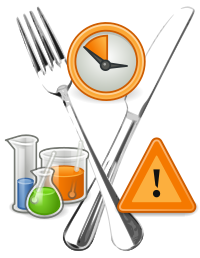
Photo from wikipedia
It is well known that food safety has aroused extensive attentions from governments to researchers and to food industries. As a versatile technology based on molecular interactions, aptamer sensors which… Click to show full abstract
It is well known that food safety has aroused extensive attentions from governments to researchers and to food industries. As a versatile technology based on molecular interactions, aptamer sensors which could specifically identify a wide range of food contaminants have been extensively studied in recent years. Surface-enhanced Raman spectroscopy integrated aptamer combines the advantages of both technologies, not only in the ability to specifically identify a wide range of food contaminants, but also in the ultra-high sensitivity, simplicity, portable and speed. To provide beneficial insights into the evaluation techniques in the field of food safety, we offer a comprehensive review on the design strategies for aptamer-SERS sensors in different scenarios, including non-nucleic acid amplification methods ("on/off" mode, sandwich mode, competition model and catalytic model) and nucleic acid amplification methods (hybridization chain reaction, rolling circle amplification, catalytic hairpin assembly). Meanwhile, a special attention is paid to the application of aptamer-SERS sensors in biological (foodborne pathogenic, bacteria and mycotoxins) and chemical contamination (drug residues, metal ions, and food additives) of food matrix. Finally, the challenges and prospects of developing reliable aptamer-SERS sensors for food safety were discussed, which are expected to offer a strong guidance for further development and extended applications.
Journal Title: Critical reviews in food science and nutrition
Year Published: 2022
Link to full text (if available)
Share on Social Media: Sign Up to like & get
recommendations!